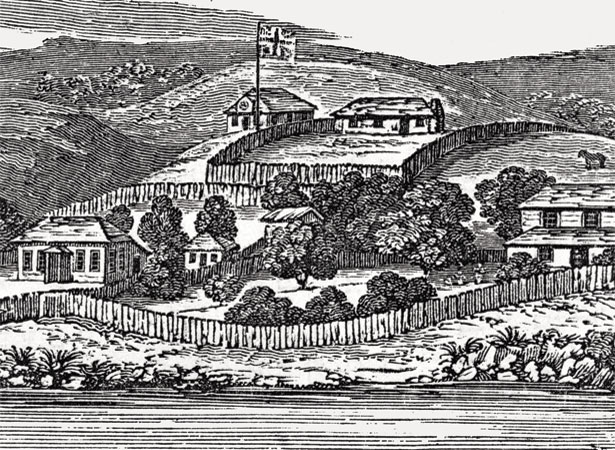
Missionary Samuel Marsden planted about a hundred grapevines of different varieties he had brought from Sydney at the site he had chosen for a new Church Missionary Society (CMS) station at Kerikeri. He wrote in his journal that:
New Zealand promises to be very favourable to the vine, as far as I can judge at present of the nature of the soil and climate Should the vine succeed, it will prove of vast importance in this part of the globe.
By 12 October, many of the vines were in leaf. However, the vineyard was inadequately fenced and it was soon destroyed by goats. While it is generally considered the first vineyard in New Zealand, the CMS’s superintendent of agriculture, Charles Gordon, may have planted vines at Rangihoua and Waitangi in 1817.
While his own project failed to bear fruit, Marsden’s belief that the country would prove ‘favourable to the vine’ was well-founded. By 1840 British Resident and wine enthusiast James Busby (see 6 February, 20 March, 28 October) was producing vintages from a vineyard he had planted at Waitangi in 1833. From 1839 Roman Catholic brothers from the Society of Mary (Marists) produced wine from their Whangaroa vineyard for sacramental purposes. When they moved south to Hawke’s Bay, they established Mission Estate in 1851. This remains New Zealand’s oldest surviving winery.
Read more on NZHistory
Establishing the Church Missionary Society – MissionariesSamuel Marsden
External links
How to cite this page
'New Zealand's first grapevines planted?', URL: https://nzhistory.govt.nz/first-grape-vines-planted-in-new-zealand-at-kerikeri, (Ministry for Culture and Heritage), updated 5-Jul-2019
